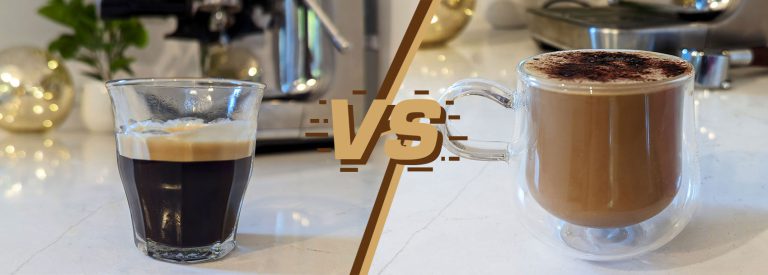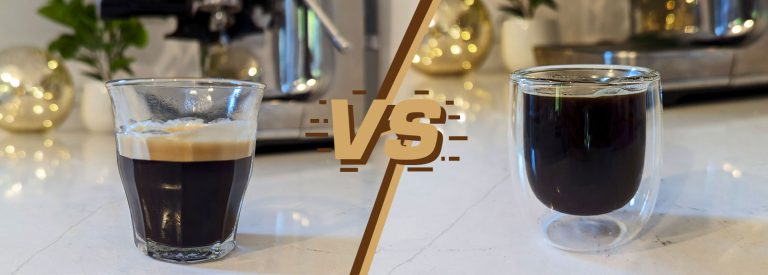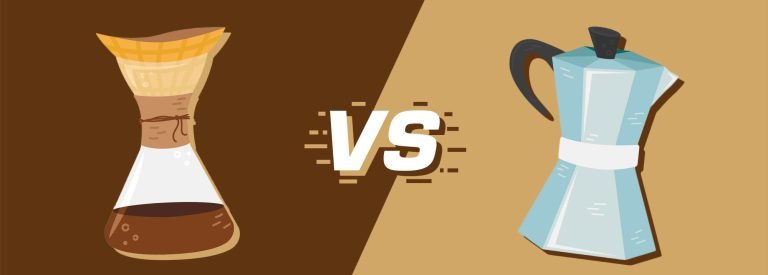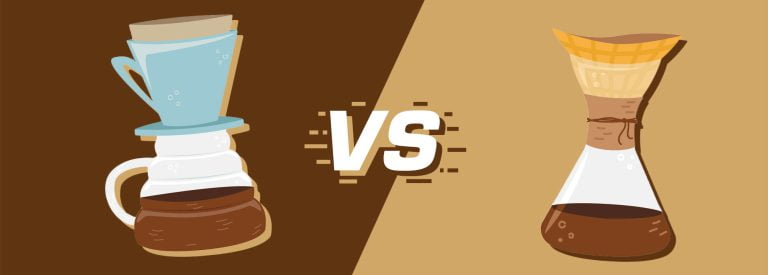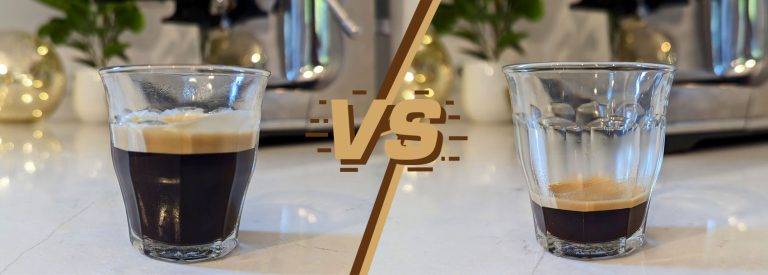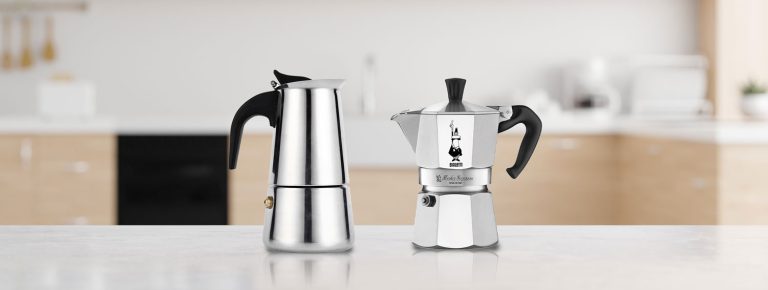Moka Pot vs Hario V60: Which Brewing Method is For You?
A few years back, my trusty Aeropress’s silicone seal cracked and I found myself torn between two options for my afternoon coffee: the Moka Pot or the Hario V60.
I have a lot of experience with both brewers, so I thought it was time to give back to the coffee community with this in-depth guide comparing the Moka Pot and Hario V60, in case you’re trying to decide between the two brewers.
Comparing Moka Pot & Hario V60 – Which Method is Better?
So, which is better, the Moka Pot or Hario V60? It depends on what you’re looking for in your coffee, as they are fundamentally different.
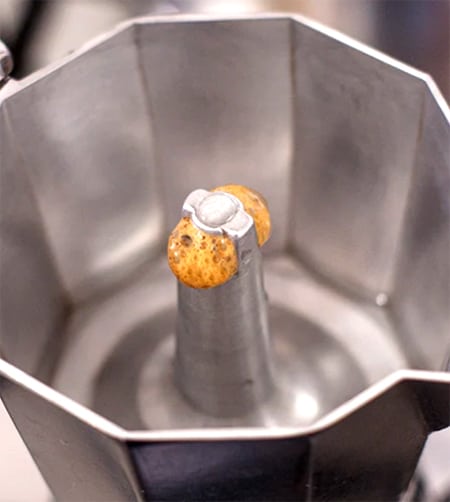
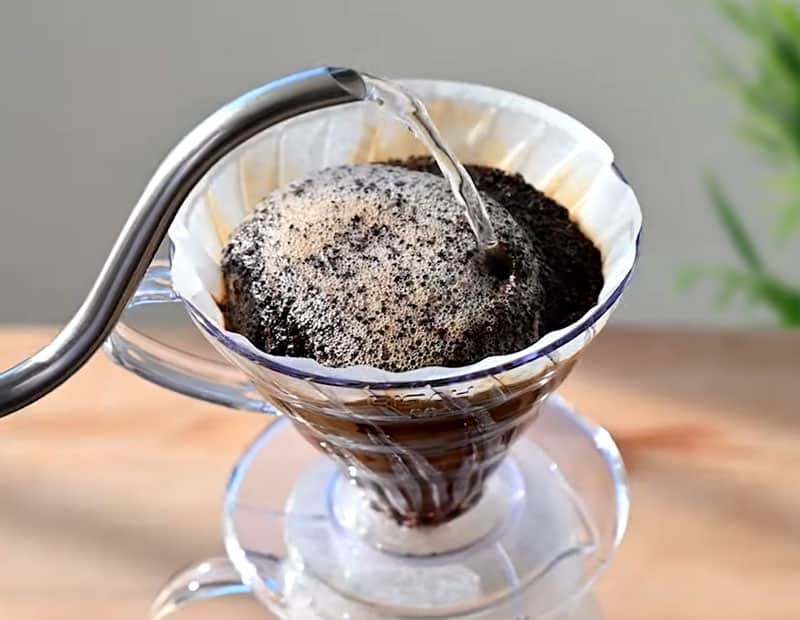
The Moka Pot is an octagonal kettle-like apparatus with three chambers used for brewing coffee. You first fill the bottom chamber with water up to a certain line. Then, add coffee grounds into the middle basket and tighten it up. Place the pot on low-medium heat until the steam pressure forces the water through the coffee grounds into the top chamber, producing a strong caffeinated drink. It is particularly popular in Italy and Spanish-speaking countries.
On the other hand, Hario V60 offers a more intricate brewing experience. Using a V-shaped conical dripper with a 60° angle, hence the V60 name, you pour hot water on a bed of ground coffee on the cone while the coffee drink drips underneath into a mug or carafe.
Here are the factors to consider when picking between the two brewing methods, followed by a detailed comparison of each feature.
| Features | Moka Pot | Hario V60 |
|---|---|---|
| Taste & Flavor | Rich and full-bodied, resembles espresso | Clean and bright, highlights flavor notes |
| Strength | Typically produces strong coffee | Variable strengths depending on technique |
| Ease of Use | Fairly easy, grind size and temperature control | Requires practice, pour technique |
| Brewing Speed | Brewing time: 5-10 minutes | Brewing time: 5-7 minutes |
| Versatility | Limited control over brewing process | High level of control over brewing process |
| Durability & Portability | Sturdy, compact, portable | Varies based on material, small and portable |
| Sustainability | More eco-friendly, minimal waste | Paper filters and potential breakage concerns |
| Cost | Price range: $15-$70, no recurring costs | Price range: $10-$50, potential filter costs |
Taste, Flavor, & Strength
The Moka Pot and Hario V60 produce two very different cups of coffee. The Moka Pot creates a rich and full-bodied aromatic coffee that resembles espresso with its concentrated and robust texture.
On the other hand, the Hario V60 produces a clean and bright brew that highlights the unique flavor notes of each coffee bean. For this reason, I always recommend using great light-roasted coffee beans with this method.
In terms of strength, the Moka Pot takes the lead as it typically produces quite strong coffee compared to the Hario V60. While both brewing methods can create a range of strengths depending on the type of beans used, the Moka Pot’s espresso-like nature gives it an edge for those who prefer a bolder cup. You can even use it to make espresso and milk drinks.
Personally, I lean towards the Hario V60 for its emphasis on highlighting individual flavor profiles. With the right beans and technique, I find that I’m able to enjoy everything from light and delicate cups to richer and bolder ones.
However, if I’m in need of a stronger pick-me-up or craving something more similar to espresso, then the Moka Pot great as well.
It really just depends on what kind of coffee you feel like having.
Ease of Use
Now let’s discuss how easy each brewer is to use.
The Moka Pot is fairly simple in this regard and doesn’t require any special pouring techniques. However, the grind size needs to be just right – medium-fine – for optimal results. You don’t want to grind too fine, as that can lead to accidental explosions (rarely).
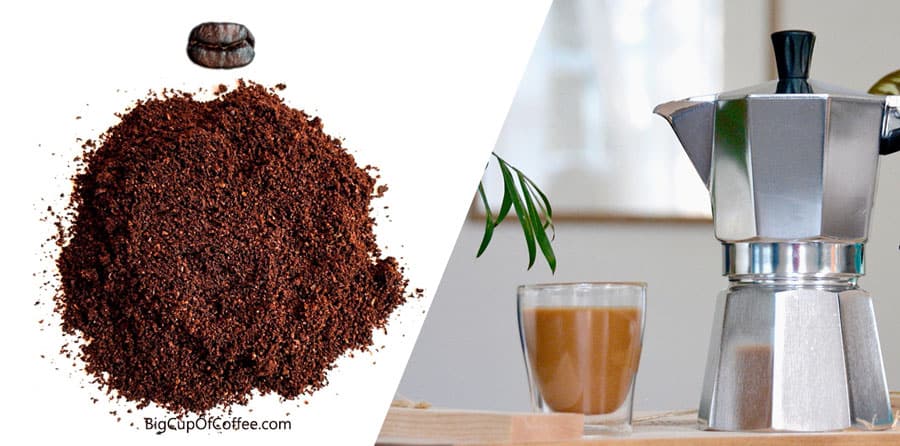
On the other hand, the Hario V60 requires some practice before getting the timings and pouring method right. But once you get the hang of it, brewing with a V60 is quite easy. It’s important to note that using a gooseneck kettle enhances your ability to pour properly into the cone shape filter. For best results, medium-fine to medium grind size works well, just make sure to use a burr grinder.

After weighing these factors together, I would say that overall the Moka Pot takes the lead just slightly as being easier to use than the Hario V60. While perfecting the variables may require a little bit of experimentation, it’s not as finicky as getting the pouring method just right with the Hario V60.
Brewing Speed
When it comes to brewing speed, the Moka Pot lags behind the V60. The Moka Pot has a total prep and brewing time of around 10 minutes, from grinding to brewing and cleaning up. The actual brewing process can last from 5 to 10 minutes depending on the size of your pot.
On the other hand, making coffee with a Hario V60 is a bit faster, taking around 5 to 7 minutes from prep time to clean up.
When cleaning up, the Moka Pot is more time-consuming, as rinsing each individual chamber with water can be a bit tricky because coffee oils and grinds can get into those small crevices in the filter basket. The Hario V60 is fairly easy to clean with just a thorough rinse of the filter cone and carafe needed.
So if you’re looking for a faster way to make coffee without much hassle during cleaning sessions, then Hario V60 is better.
Versatility
A versatile brewer allows you to experiment with various techniques and variables to achieve a cup of coffee that caters to your specific taste.
The Moka Pot may not be as versatile as other brewing methods, but it still offers some degree of control over your coffee. You can play around with the coffee-to-water ratio and grind size to create your preferred flavor profile.
The strong beverage it creates also allows for making interesting coffee drinks, like the café con leche, Cuban espresso, and many more.
In terms of capacity flexibility, the Moka Pot comes in a wide range of sizes making it easier for users who want quick single servings or larger batches:
- 0.5-cup (40 ml)
- 1-cup (60 ml)
- 2-cup (90 ml)
- 3-cup (130 ml)
- 4-cup (190 ml)
- 6-cup (340 ml)
- 9-cup (540 ml)
- 12-cup (670 ml)
- 18-cup (810 ml)
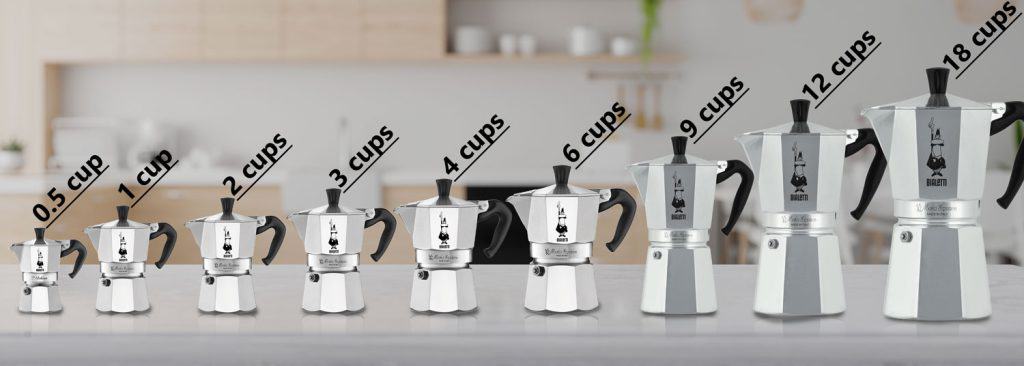
On the other hand, the Hario V60 offers a high, yet different level of control during the coffee brewing process. You have control over grind size, water temperature, pouring technique, and even water-to-coffee ratio, so you can customize many details according to your liking.
V60’s sizes are pretty limited though, with three options you can choose from depending on your needs:
- 01 (1-2 cups)
- 02 (1-4 cups)
- 03 (1-6 cups)

To sum it up, the Moka Pot offers some control over the brewing process but not as much as the V60. On the flip side, the V60 has less flexibility when it comes to capacity.
Durability and Portability
Durability-wise, the Moka Pot’s aluminum and stainless steel models are both sturdy choices, making it a great option for those who are constantly on the go. Its compact size allows you to easily bring it along wherever your coffee cravings may take you.
On the other hand, the Hario V60 is made out of different materials, with each offering varying levels of durability and portability. Ceramic or glass models may not be that sturdy but can still withstand occasional bumps and falls. There are also metal, copper, and plastic variants that provide better durability when taken outdoors.

As for its size, the V60 dripper’s small size also makes it more portable than the Moka Pot, you just need a mug or server ready to catch the delicious coffee it yields.
If I had to choose, I would prefer using the V60 while traveling. It doesn’t take up too much space in my luggage, and is easier to use.
Sustainability
The Moka Pot is more eco-friendly than the Hario V60. The pot’s simple design only requires water and coffee grounds, producing minimal waste. Plus, being made entirely of metal means it’ll last a long time with no replacements needed (other than a gasket every few years). Classic aluminum Bialetti moka pots have lasted decades.
Meanwhile, the Hario V60 has some wastefulness concerns due to its paper filters. Ceramic and glass models also have breakage issues resulting in additional purchases over time, not to mention their plastic counterparts can also be harmful to the environment. However, if you take proper care of your V60, it can last quite a while.
Cost
Talking costs, the Moka Pot and Hario V60 are both great options for coffee aficionados on a budget. The Moka Pot can range from $15 to $70 depending on the quality, with no recurring costs needed.
The Hario V60 is generally more affordable with a price ranging from $10 to $50. However, keep in mind that you’ll need paper filters if you decide to skip reusable ones, and these single-use filters can add an extra expense of around 8 cents per filter as of 2024.
So if you don’t mind paying a little higher on the initial investment to save money in the long run, then the Moka Pot might be your best pick. But if you prefer a lower cost upfront without compromising flavor, then go for the V60.
Moka Pot and Hario V60 – Weighing the Pros & Cons
Now that we’ve gotten a closer look at the features of each brewing method, here’s a quick overview of the pros and cons of Moka Pot and Hario V60 so you can finally decide which one is for you:
| Brewing Method | Pros | Cons |
|---|---|---|
| Moka Pot | – Small and portable – Easy to use – Produces robust coffee similar to espresso | – Cleaning is a bit tougher – Limited control once the brewing has started – Can easily have a bitter taste |
| Hario V60 | – Various materials and sizes for different needs – Produces delicious coffee with low acidity | – The pouring technique needs practice – The use of paper filters produces waste – Glass models can be fragile |
Check out how Moka pot also compares to other brewers:
Meanwhile, here are my comparisons between Hario V60 and the following brewing methods:
Conclusion
It’s tough to say which is better, as both have their advantages and drawbacks. As for the flavor, it’s really up to what you want to drink.
Personally, I like the Hario V60 because it’s easy to carry around, and I just find it satisfying to be able to pour properly for a great-tasting cup of my favorite coffee. But that’s just me.
Let me know which brewer you like better by sharing it in the comments below.


